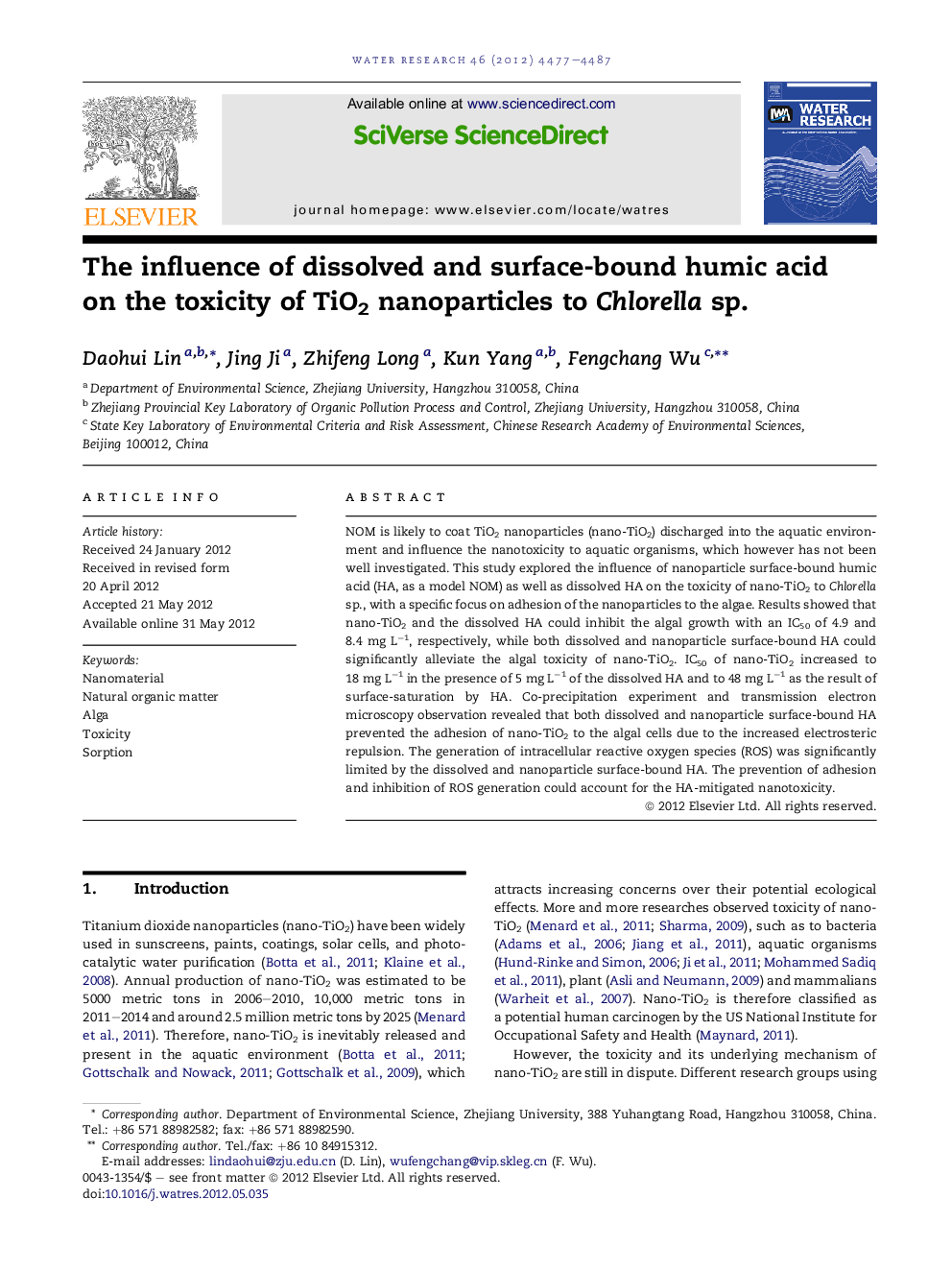| Article ID | Journal | Published Year | Pages | File Type |
|---|---|---|---|---|
| 4482217 | Water Research | 2012 | 11 Pages |
NOM is likely to coat TiO2 nanoparticles (nano-TiO2) discharged into the aquatic environment and influence the nanotoxicity to aquatic organisms, which however has not been well investigated. This study explored the influence of nanoparticle surface-bound humic acid (HA, as a model NOM) as well as dissolved HA on the toxicity of nano-TiO2 to Chlorella sp., with a specific focus on adhesion of the nanoparticles to the algae. Results showed that nano-TiO2 and the dissolved HA could inhibit the algal growth with an IC50 of 4.9 and 8.4 mg L−1, respectively, while both dissolved and nanoparticle surface-bound HA could significantly alleviate the algal toxicity of nano-TiO2. IC50 of nano-TiO2 increased to 18 mg L−1 in the presence of 5 mg L−1 of the dissolved HA and to 48 mg L−1 as the result of surface-saturation by HA. Co-precipitation experiment and transmission electron microscopy observation revealed that both dissolved and nanoparticle surface-bound HA prevented the adhesion of nano-TiO2 to the algal cells due to the increased electrosteric repulsion. The generation of intracellular reactive oxygen species (ROS) was significantly limited by the dissolved and nanoparticle surface-bound HA. The prevention of adhesion and inhibition of ROS generation could account for the HA-mitigated nanotoxicity.
Graphical abstractFigure optionsDownload full-size imageDownload high-quality image (118 K)Download as PowerPoint slideHighlights► Anatase nano-TiO2 inhibited algal growth of Chlorella sp. with an IC50 of 4.9 mg L−1 ► Both dissolved and nanoparticle-bound humic acid (HA) could lower the toxicity. ► HA prevented adhesion and agglomeration of the nanoparticles with the algae. ► HA inhibited the production of intracellular reactive oxygen species.
